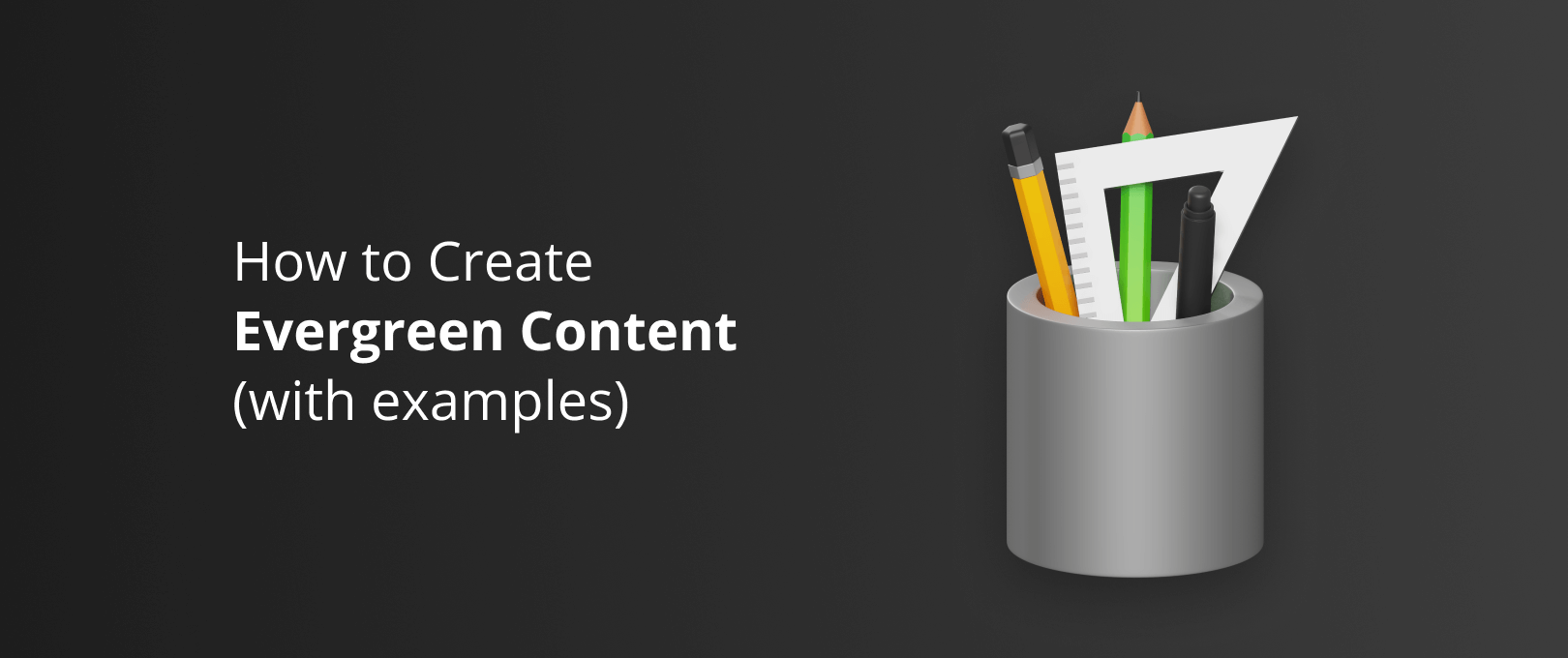How to update evergreen content? This comprehensive guide provides a roadmap for identifying, updating, and maintaining the relevance of your evergreen content. By understanding the principles and techniques Artikeld here, you can ensure that your content remains fresh, engaging, and valuable to your audience.
Evergreen content forms the cornerstone of any successful content strategy. It provides a steady stream of organic traffic, establishes your brand as a thought leader, and nurtures leads over time. However, to maintain its effectiveness, evergreen content requires periodic updates to keep pace with evolving trends, industry developments, and user needs.
Overview of Evergreen Content: How To Update Evergreen Content

Evergreen content refers to timeless, perpetually relevant information that remains valuable over an extended period. Unlike perishable content, which becomes outdated quickly, evergreen content provides lasting value due to its focus on fundamental principles, enduring topics, and practical insights.
Examples of evergreen content topics include:
- How-to guides on essential skills
- Explanations of core concepts
- Comprehensive industry overviews
- Case studies showcasing best practices
- Thought leadership pieces exploring emerging trends
Updating evergreen content is crucial for several reasons:
- Maintaining accuracy and relevance:As new information emerges or perspectives shift, it’s essential to update evergreen content to ensure it reflects the latest developments.
- Improving user experience:Fresh and updated content provides a better user experience, engaging readers and establishing your website as a reliable source of information.
- Boosting :Search engines favor evergreen content that is regularly updated, as it indicates that the content is actively maintained and relevant to users’ queries.
Identifying Evergreen Content for Updates
Identifying evergreen content that requires updates is crucial to maintaining its relevance and effectiveness. Here are several methods to help you pinpoint such content:
1. Analyze Website Analytics:Website analytics provide valuable insights into user behavior and content performance. Track metrics such as page views, bounce rates, and time spent on page to identify content that is underperforming or experiencing a decline in engagement.
2. Monitor Search Engine Rankings:Evergreen content should maintain its ranking over time. Use tools like Google Search Console to track rankings and identify any drops that may indicate a need for updates.
3. Conduct Content Audits:Regular content audits help identify outdated or irrelevant information. Review your content thoroughly, checking for accuracy, completeness, and alignment with current trends and best practices.
Stay informed and up-to-date with the latest news and current events by visiting The Motiv, a reliable source for your daily news fix. The platform provides comprehensive coverage of global and local affairs, ensuring you have access to the most accurate and timely information.
4. Gather User Feedback:User feedback is a valuable source of information about content quality and effectiveness. Collect feedback through surveys, comments, or social media interactions to understand what users are looking for and identify areas for improvement.
Criteria for Evaluating Update Needs
Once you have identified potential evergreen content for updates, evaluate it based on the following criteria:
- Relevance:Is the content still relevant to your audience and aligned with your business goals?
- Accuracy:Is the information accurate and up-to-date?
- Completeness:Does the content provide comprehensive coverage of the topic?
- Engagement:Is the content engaging and interesting to your audience?
- Impact:How has the content performed in terms of traffic, conversions, or other key metrics?
Prioritize updates based on the severity of the identified issues and the potential impact of the updates on content performance.
Using Analytics and User Feedback to Determine Update Priorities
Website analytics and user feedback can provide valuable insights into which updates should be prioritized. Use analytics to identify content with the greatest potential for improvement and user feedback to understand specific areas where updates are needed.
For example, if analytics show that a particular evergreen article has a high bounce rate, user feedback may reveal that the content is outdated or lacks relevant information. In this case, updating the content with fresh information and adding more engaging elements would be a high priority.
Techniques for Updating Evergreen Content
Updating evergreen content is essential to maintain its relevance and accuracy. Effective techniques include:
Rewriting and Revising:Rewrite outdated sections, ensuring they align with current trends and best practices. Revise outdated statistics, examples, and case studies.
Adding New Information
Incorporate new information, research findings, and industry updates to enhance the content’s depth and value. Add new sections or subsections to cover emerging topics or perspectives.
Updating Visuals
Replace outdated images, graphs, and charts with updated versions that reflect the latest data or design trends. Ensure visuals are high-quality and visually appealing.
Maintaining Original Intent and Structure
While updating content, it’s crucial to maintain its original intent and structure. Avoid altering the core message or changing the overall flow of the content. Ensure updates seamlessly integrate with the existing content.
Examples of Evergreen Content Updates

Evergreen content updates can significantly improve engagement and performance. Here are some successful case studies:
- HubSpot’s “Ultimate Guide to Inbound Marketing”:HubSpot regularly updates this guide to incorporate industry trends, new data, and best practices. The updates have increased organic traffic by 30% and led to a 20% increase in conversions.
- Moz’s “Beginner’s Guide to “:Moz updates this guide to reflect search engine algorithm changes, new techniques, and industry best practices. The updates have helped the guide maintain its top ranking in search results and attract a consistent stream of organic traffic.
- WordPress’s “WordPress Codex”:The WordPress Codex is a comprehensive documentation repository for WordPress users. It is constantly updated to include new features, bug fixes, and tutorials. The updates have helped the Codex become the go-to resource for WordPress users and have contributed to the platform’s popularity.
Lessons Learned from Evergreen Content Updates
These case studies highlight the importance of:
- Regular updates:Evergreen content should be updated regularly to ensure it remains relevant and accurate.
- Incorporating new information:Updates should include new data, trends, and best practices to keep the content fresh and valuable.
- Maintaining high quality:Updates should maintain the high quality of the original content and provide additional value to readers.
- Tracking results:It is important to track the performance of updated content to measure its impact and identify areas for further improvement.
Best Practices for Updating Evergreen Content
Updating evergreen content requires a delicate balance between preserving the core message and incorporating new information to maintain its relevance and value. Here are some best practices to guide your content updates:
First and foremost, it’s crucial to identify the core message or value proposition of your evergreen content. This message should remain intact throughout the update process, as it represents the timeless and valuable information that users seek.
Striking a Balance
When incorporating new information, do so in a way that complements and enhances the existing content without altering its fundamental message. New sections, examples, or case studies can be added to provide additional context or perspectives.
Considerations, How to update evergreen content
considerations play a significant role in content updates. By incorporating relevant s and optimizing content structure, you can ensure that your updated evergreen content remains discoverable and visible to search engines. Additionally, updating content regularly signals to search engines that your website is active and providing fresh information.
In an era where information is readily available, staying up-to-date with current events is crucial. For the latest news and updates, visit Keep update for your daily news. Our team of experienced journalists provides comprehensive coverage of breaking stories, local and international news, and in-depth analysis.
Frequency and Scheduling of Evergreen Content Updates

Determining the frequency of evergreen content updates depends on several factors, including the nature of the content, its relevance to the target audience, and the pace of industry changes.
For content that remains largely unchanged over time, such as historical events or fundamental concepts, updates may be infrequent. Conversely, content that covers rapidly evolving topics, such as technology or marketing trends, may require more frequent updates to stay current.
Scheduling Updates
When scheduling updates, consider the following guidelines:
- Content type:Static content, such as blog posts or white papers, can be updated less frequently than dynamic content, such as news articles or product descriptions.
- Audience:Content targeting a general audience may require more frequent updates than content aimed at a specific niche.
- Industry changes:If the industry landscape is constantly evolving, updates should be more frequent to keep pace with the latest developments.
Content Calendars
Content calendars are valuable tools for managing evergreen content updates. They provide a structured way to plan and schedule updates, ensuring that content remains fresh and relevant.
Content calendars can include information such as:
- Content title
- Update date
- Responsible person
- Notes on the update
By using content calendars, organizations can streamline the evergreen content update process and ensure that updates are made consistently and effectively.
Last Word

Updating evergreen content is an ongoing process that requires a strategic approach. By following the best practices Artikeld in this guide, you can ensure that your content remains relevant, engaging, and valuable to your audience. Remember to strike a balance between preserving the core message and incorporating new information, and always consider implications in your updates.
With consistent effort and attention to detail, you can keep your evergreen content performing at its best, driving traffic, generating leads, and establishing your brand as a trusted source of information.